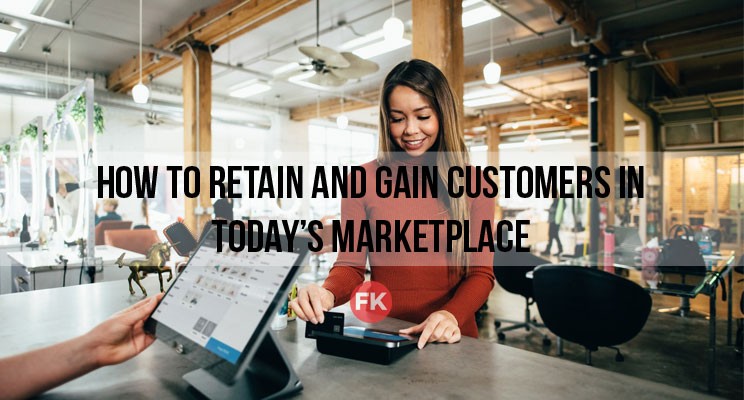
How to Retain and Gain Customers in Today's Market - Part 1
For many brands and businesses around the world, 2021 has marked the beginning of brighter days, after a very long, dark year. Many people have felt like tightly compressed springs, cooped up in their homes for many months, and now these persons are ready to jump at anything new-whether that is a destination, a new experience, or a new product on the shelf.
As the world begins to return to normal, many retailers and brands are also facing a new set of challenges in retaining their existing customers, whether this is due to purchasing habits transitioning from online back to offline purchasing, to new competition, as well as pickup and curbside shopping-where customer choose products online, and then perhaps only briefly stop into retailers to collect preordered items and last minute purchases.
WHAT IS CUSTOMER RETENTION MARKETING?
This new landscape of shopping behaviors makes customer retention marketing all the more important for both brands and retailers that sell them to implement. Also known as lifecycle marketing or loyalty marketing, customer retention marketing is the process of engaging existing customers to continue buying from your business or brand. In today’s market, this means continuing to keep customers engaged, positively interacting with you, and spending their hard earned dollars with you, instead of your competition. It applies in every business category and industry: from destination hotels to wine, whiskey to pasta sauce, home goods to personal care, as well as health and wellness products.
Why, however, should customer retention be such a high priority for a mature brand or retail experience? Won’t former and current customers simply continue to buy the way they used to do? In a word, no. Statistics show that behaviors in purchasing have been permanently impacted by the events of 2020, and in addition, the value of retaining a customer has a direct impact on a brand’s bottom line. Studies show that acquiring a new customer can cost an average of seven times more than retaining an existing customer, with some industry cost analyses indicating closer to 25 times the cost! Additionally, research shows that just a 5% increase in customer retention can result in 125% more profits for a brand.
So, how does a business or brand retain customers and keep them buying from their brand or locations, instead of a competitor?
Research shows that just a 5% increase in customer retention can result in 125% more profits for a brand.
USE ‘CHURN’ TO ANALYZE BEHAVIORS, NOT JUST METRICS
With all businesses, customer turnover, also known as ‘churn’, is going to occur. Simply put, this is the percentage of customers who end their relationship with your business over a given period of time. The importance of analyzing this from a behavioral perspective matters, because you may be marketing incorrectly, or targeting the wrong customer. Churn can be lessened if you understand the bigger picture of the buying cycle: from why that customer chose to do business with you in the first place, as well as why the relationship may have come to an end. A brand can also lessen churn by ensuring that ongoing marketing and brand stories connect with their customer base, showing how their brand can continue to fit into their personal lives.
KNOW AND TARGET THE ‘RIGHT’ CUSTOMERS FOR YOUR BUSINESS
For a customer retention strategy to be effective, you have to be sure your message and brand is reaching the right kind of customers. For example, if a business is marketing primarily based on price, or through deep discount retailers, deal–seeking consumers will be highly disloyal, and will leave as soon as a competitor offers a lower price. If the value of the unique products or services a company offers is highlighted, or other features like top notch customer service, shoppers will be more likely to be loyal, and purchase more than once.
Does your brand story, content strategy, and where your brand is getting talked about connect with your ideal customer? If not, why not, and can that be changed?
DEFINE LIFETIME CUSTOMER VALUE, INSTEAD OF SINGLE SALES ACQUISITIONS
Future revenue can also be more accurately predicted if a business understands the full lifetime value of a customer. Measuring in this manner will generate a clearer picture of potential net profit from each individual, especially if your product is not a once in a lifetime sale.
The lifetime value of a customer (or CLV) should also be taken into consideration with attribution to referrals and word of mouth, as even high value purchases like automobiles, homes, boats, and recreational vehicles can frequently be attributed to previous sales or brand engagements. These measurement tactics are often overlooked, although a better indicator of future revenue, because they require analyzing a longer term customer relationship, instead of a single sale.
CONTINUE TO ENGAGE
As the world begins to open up, part of the challenge that many brands have is in retaining existing customers, getting them to continue to purchase in a time when anything shiny or new might easily attract them. It can be easy to focus on a single engagement or sale, which can lead established brands to offers things like deep discounts or flash sales, in hopes that a customer will return. However, the real value is in creating ongoing engagements and a series of purchases, when possible, in order to strengthen the loyalty connection between a brand and their customer.
We'll continue next week with more tips on how to gain and retain customers, as well as how to create a direct-to-consumer marketing strategy. Have questions? Contact our team at vip@fkint.com, or 321-285-6225 to schedule a consultation.



